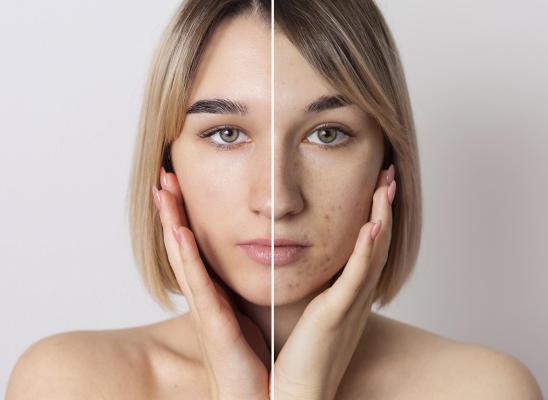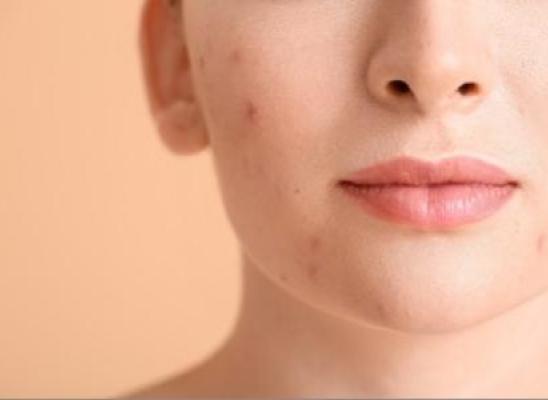Through A Different Lens: Skin Stories and Family Feelings

Online test
Find out the severity of your symptoms with this free online test
Skin picking, clinically known as Excoriation Disorder, is a body-focused repetitive behavior (BFRB) characterized by
- repetitive picking of the skin that causes damage to the skin
- repeated attempts to stop or reduce the picking
- emotional distress
- impaired psychosocial functioning
- the picking is not due to another mental health or medical condition (e.g., a dermatological condition).
- Do I Have Dermatillomania?Check the severity of your skin picking symptoms with this free online test
The presence of these key criteria would confirm a diagnosis of excoriation disorder. But is it that simple?
We know that skin picking can be found within families and across generations. Skin picking is also highly heterogenous meaning that it can present in different ways and not everyone experiences or interprets skin picking in the same way. For some, skin picking can be highly disruptive in their lives. For others, they are able to find a place of acceptance or tolerance, and ways to manage their picking. Some people living with a BFRB like skin picking seem to be rather unbothered by it all and view it as simply a part of their world.
Studies can tell us a lot about skin picking the disorder but what about the experience of skin picking? Is it possible that how one views their skin picking can determine if it’s a problem for them or simply an aspect of life that they accept?
Looking Beyond A Diagnosis
Human behavior and functioning can be affected by any number of variables, some internal and some we encounter in the world. Social psychology suggests that a person’s social and cultural dynamics contribute to their perceptions and experiences. Unlike some approaches that view psychological functioning as strictly an internal process, embodiment focuses on the dynamics between the body and its many experiences and influences. Viewing behavior and functioning from an embodied perspective means considering how the body gives rise to behavior and functioning in various social contexts and conditions. Experiences are uniquely individual so it makes sense that there might even be differences in perspective between family members and across generations.
A recent study looked at skin picking through this lens of embodiment to explore the how different experiences and influences may shape views of skin picking within a family and across generations. Using an ethnographic interview between the author and their mother, the findings suggest that skin picking is more than just a set of symptoms. Rather, skin picking can be considered to be a technique of the body.
Body techniques are learned behaviors that reflect certain aspects of a culture. A culture holds the beliefs and practices of a group. Some cultural practices are embodied in physical actions and skills. Body techniques are part of expressing and passing on cultural influences and traditions to new generations. These traditional behaviors often hold an element of prestigious imitation, meaning that the person being imitated holds a place of great authority and respect. For many, that might be a parent or other influential family member.
The author notes that while their picking style is different from their mother’s, there are elements picking that were learned or transmitted from parent to child, reflecting the cultural and generational influences.
Generational Threads
A number of similarities and differences were revealed that speak to their individual experiences and to their cultural underpinnings. A few of the findings include:
- Both mother and daughter had a history of skin picking. Their picking emerged for seemingly very different reasons and in different ways:
The daughter described skin picking as emerging during her school years. Triggers that were identified included stress and boredom. The author noted that her skin picking may also be related to co-occurring ADHD. Her picking progressed over time, and she would pick spots on her scalp. She engaged in certain picking rituals that were similar to her mother’s patterns.
The mother’s picking emerged in adulthood. Her picking was confined to one area on the scalp, known as a “picker’s nodule”. This nodule is the result of repetitive picking in the same place and becomes thicker over time. Mother saw a dermatologist for the nodule and subsequently had it removed. Her picking moved to another localized area of her skin.
- The author noted that she was seeing a mental health clinician. The mother did not view picking as problematic but rather as a “bad habit” that had little bearing on her mental health.
- The interview revealed the cultural and multigenerational threads related to the mother’s perception and ideas about appearance. The mother’s experience with her own mother (the interviewer’s grandmother) seemed to normalize the body as a “technical object” that needed to be rid of imperfections. Picking became a “body technique” to meet that expectation. The author suggests that this dynamic highlights the influence that social context has on self-perception and meaning.
- While the grandmother did not engage in skin picking, there was an emphasis on appearance. This focus did not seem to extend to the male siblings suggesting there was a gendered quality to the expectations.
- Ideas about stigma and shame extended from mother’s ideas about appearance to her daughter’s appearance as well as to the family.
- The author notes that “Skin picking clearly means something different to Pinky (mother) than it does to me, and this mediates how we invite and negotiate medical interventions.” Mother chose to see a dermatologist. The author suggests that this choice may be rooted in her mother’s personal body history and the familiar feeling of grooming and treating her body. The author chose psychiatry based on her own unique context, preferences, and needs.
The author suggests that from a larger perspective, skin picking is not simply a medical disorder or “fact”. It is a phenomenon that can be viewed from many perspectives and holds many meanings. Looking for that meaning can bring a more holistic view of someone’s experience and more individualized approaches to treatment and support.
References
1. Schubert, T. W., & Semin, G. R. (2009). Embodiment as a unifying perspective for psychology. European Journal of Social Psychology, 39(7), 1135-1141. https://onlinelibrary.wiley.com/doi/10.1002/ejsp.670
2. Jacinto, Katrina (2023) "Skin Stories and Family Feelings: The Contradictions of Skin Picking in Mother and Daughter," Crossings: Swarthmore Undergraduate Feminist Research Journal: 1 (1), 115-126. https://works.swarthmore.edu/cgi/viewcontent.cgi?article=1023&context=crossings
3. Mauss, Marcel. “Techniques of the Body.” Economy and Society 2, no. 1 (1976): 70–88. https://www.tandfonline.com/doi/abs/10.1080/03085147300000003
Online test
Find out the severity of your symptoms with this free online test
Start your journey with SkinPick
Take control of your life and find freedom from skin picking through professional therapy and evidence-based behavioral techniques.
Start Now



